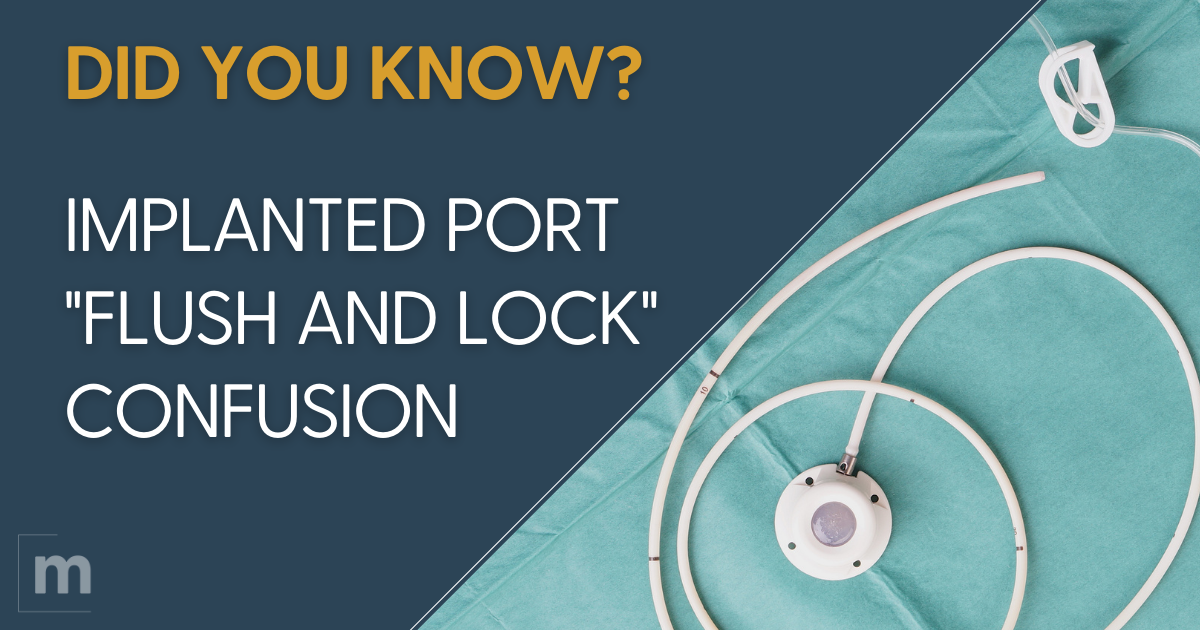DID YOU KNOW? IMPLANTED PORT “FLUSH AND LOCK” CONFUSION

Did you know that implanted port flushing protocol can be a confusing topic for many healthcare professionals?
As someone who has been teaching infusion therapy management for years, I have noticed that this topic often raises questions.
The following will help you shed some light on this subject.
Disclosure: Before implementing any changes to your infusion therapy practices, it is important to ensure that your infusion therapy policy and procedure manual reflects those changes. It is essential to follow the latest standards of practice recommended by the Infusion Nurses Society (INS).Flushing and locking are two essential procedures recommended by the INS to maintain port patency. Here are the most recent recommendations:
-
- Before each infusion and when inserting a non-coring needle, trained nurses should flush and aspirate for blood return to ensure that the port is patent. The INS recommends using at least 10 mL of 0.9% sodium chloride solution to prevent catheter occlusion and maintain patency.
- Although recommendations for the frequency, solution, or solution volume to flush and lock ports not accessed for infusion vary, the INS recommends using heparin to lock the port and maintain patency. If heparin is used, 5 mL of heparin (10 to 100 units/mL) is commonly recommended every 4 to 12 weeks. Recent studies suggest that the use of 0.9% sodium chloride alone may be as effective as heparin in locking to maintain port patency.
- Studies have shown that extending maintenance flushing and locking to every 3 months with 10 mL of 0.9% sodium chloride and 3 or 5 mL of heparin (100 units/mL) is safe and effective in maintaining patency for adult oncology patients.
- Ports accessed for intermittent infusions should be flushed immediately before and after each infusion to prevent catheter occlusion and maintain patency.
In conclusion, the maintenance of implanted ports is a critical responsibility of trained nurses, and flushing and locking are essential procedures to ensure patency and assess function. Infusion nurses should follow INS guidelines and best practices to prevent catheter occlusion, maintain patency, and prevent port-related infections.
Incorporate the latest infusion therapy standards of practice into your healthcare facility’s training program today by subscribing to IV Mastery online training platform and ensuring your nurses are equipped with the skills and knowledge they need to provide the best patient care.
Reference: Infusion Nurses Society. (2021). Infusion Therapy Standards of Practice, 8th Edition. Section 28: Implanted Vascular Access Ports.
Let us show you how we help support nurses through IV Education.
